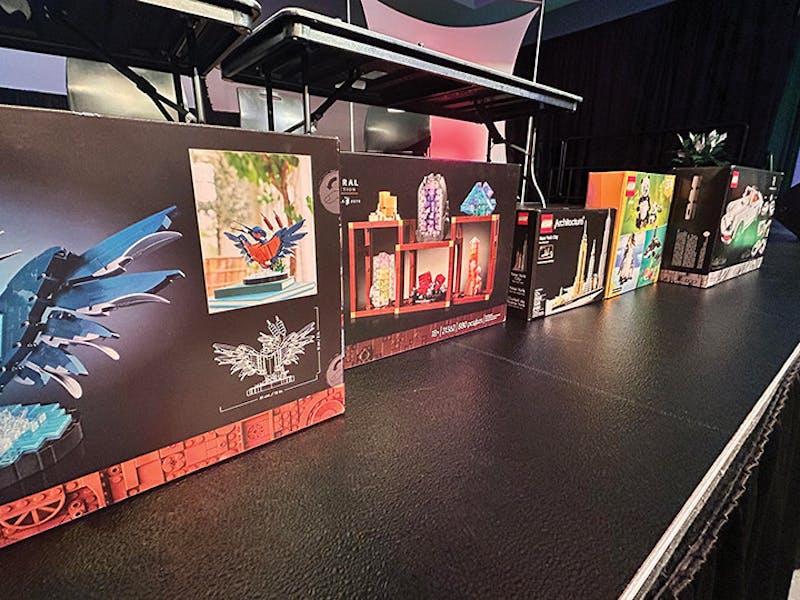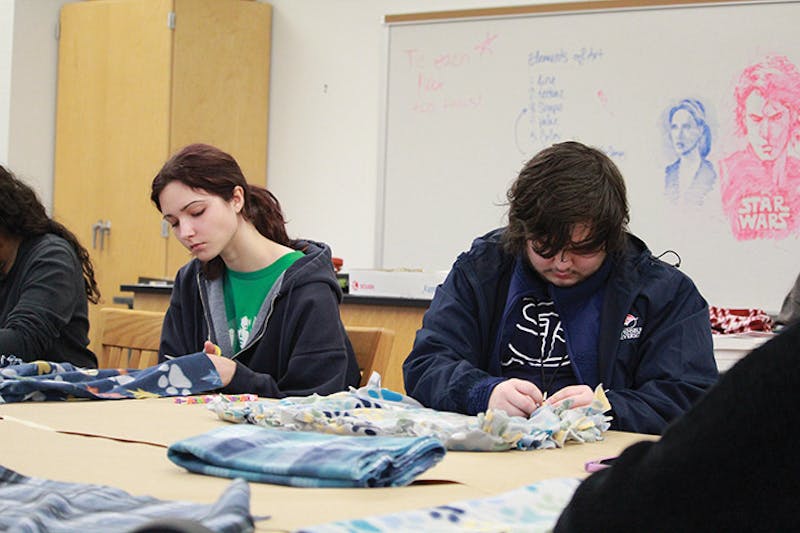As attitudes about women in the workplace and having more social freedoms began to change more rapidly, women’s fashion did as well. Pants finally became a reality for women in every scenario following the 60s and 70s and were now acceptable for eveningwear and professional dress. The 1980s had seen the most casual take on fashion yet with athletic wear and bold colors taking center stage, and this shift to minimalism continued into the 90s.
In the 90s, there were high hopes for women’s rights and freedoms. As TIME magazine writes, “daughters of second-wave feminism came of age and chose new paths unavailable to their mothers: delaying marriage and children, pursuing higher education, joining the workforce, and assuming independence and identities outside of the home.”
The median age for marriage had previously been from 20 to 22, but in the 90s it jumped to 24. Girl culture became larger as well with the rise of “Girl Power” and the “Riot Grrrl” movement. Women’s priorities were shifting as more of the world was opening up to them, and fashion followed suit.
In the early 90s, big 80s looks were still in style, and the high fashion supermodel was all the rage. Yet the decade quickly shifted to a more casual and wearable style with the introduction of grunge. While grunge began in Seattle in the 80s, it became extremely popular in the 90s. The look was quite masculine forward and focused on everyday wear. Grunge incorporated elements like flannel shirts, slip dresses, Dr. Martens boots and worn jeans. There was also an emphasis on second hand or already worn-in clothes and vintage clothing.
Fashion History Timeline notes that the grunge style found its way to the runway as well, with Marc Jacobs’ collection for Perry Ellis. This shifted away from the supermodel look and to the “heroin chic” look popularized by models like Kate Moss. This waifish body combined with more masculine styles enhanced the “unkempt” look that was popular in the early 90s.
Later, there was a notable shift back to more feminine styles. Slip dresses remained in style and were worn both as formalwear and casually. Additionally, as Fashion History Timeline writes, the “sexy schoolgirl” looks reached popularity after the movie ‘Clueless’ and music video for Britney Spears’ “...Baby One More Time.” This look kept it casual but also preppy and showy, incorporating tiny sweaters, baby t-shirts and knee socks.
While this look might have been empowering for some, it contributed to the growing issue of women’s oversexualization. The 90s were certainly built on the successes of women in the 80s. The trend continued, but was diminished by society’s ideas about women. TIME points out that: “in the end, the 1990s didn’t advance women and girls; rather, the decade was marked by a shocking, accelerating effort to subordinate them. As women gained power, or simply showed up in public, society pushed back by reducing them to gruesome sexual fantasies and misogynistic stereotypes.”
TIME notes that the lives of successful women in the 90s were turned into stories about their being “sluts,” “prudes” or “frauds.” Though women in the 90s had freedoms, sexism still existed and ran rampant through society.
Female sexualization did not stop in the 90s, with scantily-clad women used as eye-candy in advertising. Fashion was about baring more skin. Ultra-low-rise jeans and crop tops dominated the early 2000s, as did miniskirts. These styles drew attention to the midriff and legs.
Paris Hilton was known for helping popularize many of these trends, especially Ugg boots and miniskirts, velour tracksuits and the baby tee. While Hilton did wear some quite outlandish clothes, she also presented elements of style that were attainable for women at the time like the baby doll tank top and low-rise jeans.
Sept. 11 changed everything, including fashion. Styles became more conservative after Sept. 11, and this brought about the rise of jeans for every occasion, said Fashion History Timeline. Low-rise flared jeans were popular in the early 2000’s, transitioning to a more bootcut look towards the mid 2000’s. Skinny jeans became popular later in the decade, as did ripped, distressed and worn jeans, taking notes from the 90s. In the 2000s, jeans could be seen everywhere from the runway to the red carpet.
New styles also began to emerge in the 2000s. The bohemian or “boho” look was a different take on the grunge of the 90s. It was still highlighting second hand clothing, but in a boutique way. Instead of hitting the charity stores, women would shop at high-end boutiques for their vintage styles.
Fashion and its accessibility also began to change in the 2000s.
“Throughout the decade, the dissemination of fashion through technology, whether from instantly sharing celebrity looks online or through e-commerce, increased instances of affordable copies,” Fashion History Timeline writes. “Celebrities played a massive role in consumer choices, while high street copies of designer styles were produced quickly and cheaply for the masses.”
Designers began to partner with fast fashion retailers in order to feed the hunger for more affordable designs as people became increasingly aware of what was happening on the runway. Technology played a major role in 2000s fashion and would continue to do so through the present day.
The 2010s introduced many new styles thanks to the introduction and pervasion of Instagram, which came out in 2010. Instagram meant that people interested in fashion could post their own looks and get inspired by others. This led to the rise of the social media influencer over the celebrity. Fashion History Timeline also notes that “Fashion bloggers gained massive followings and often the story was about what spectators wore to fashion shows rather than what actually went down the catwalk.” Additionally, Instagram meant access to more types of fashion.
New styles were abundant in the 2010s, with many taking inspiration from previous decades. “Athleisure” was a new look in 2010, where people wore expensive, boutique workout wear without actually working out. Both Bella and Gigi Hadid sported this look, as well as Kylie Jenner. The look even made it to the runway. Chanel released a collection in 2014 that featured distressed leggings, crop tops and sneakers. Athleisure brands like Yeezy and Fenty x Puma emerged in 2016.
“Normcore” was another style that emerged in the 2010s. It was inspired by Scandinavian fashion and went for a more minimalist approach, a response to the highly styled runway look. Normcore was also known for its white sneakers, which took over the 2010s after Phoebe Philo wore a pair of Adidas Stan Smiths to Paris Fashion Week in 2011. This trend has also carried over into the 2020s.
Additionally, in 2015 Alessandro Michele took over as creative director of Gucci and introduced, as Fashion History Timeline puts it, a “quirky, geeky Wes Anderson aesthetic.” The aesthetic was meant to bring more fun into fashion, and consisted of elements like bright colors and bold textures and an overall sense of nerdiness. Michele was also known for blurring gender boundaries, creating many androgynous looks.
Androgyny was a major part of fashion on and off the runway in the 2010s. Instead of separating models and clothing, fashion began taking a “one style fits all” approach. Elle notes that Prada began merging men’s and women’s fashion in 2010, and many fashion houses started long before that, but it was still somewhat strange to the public. In 2018, many brands followed suit, combining previously very gendered styles and clothes. The CFDA, who is the organizer for New York Fashion Week, added “unisex/non-binary” as a new category in 2018 as well.
While the 2010s were not the first time women were borrowing traditionally masculine clothes, it became more acceptable for men to sport traditionally feminine clothing. In the 90s through the 2010s, women began to speak up more and more for their rights. The third and fourth waves of feminism began during this period, promoting inclusivity and taking a stand against sexual assault and rape.
In the 2020s, women are still fighting against these issues, and still rocking clothes from decades past. From pants to unisex styles, society has majorly influenced how women present and are allowed to move in social spaces. Nothing is perfect, but women are taking charge of their own lives and speaking up about problems present within our current system and the fashion world is evolving quickly alongside this movement.



The Slate welcomes thoughtful discussion on all of our stories, but please keep comments civil and on-topic. Read our full guidelines here.